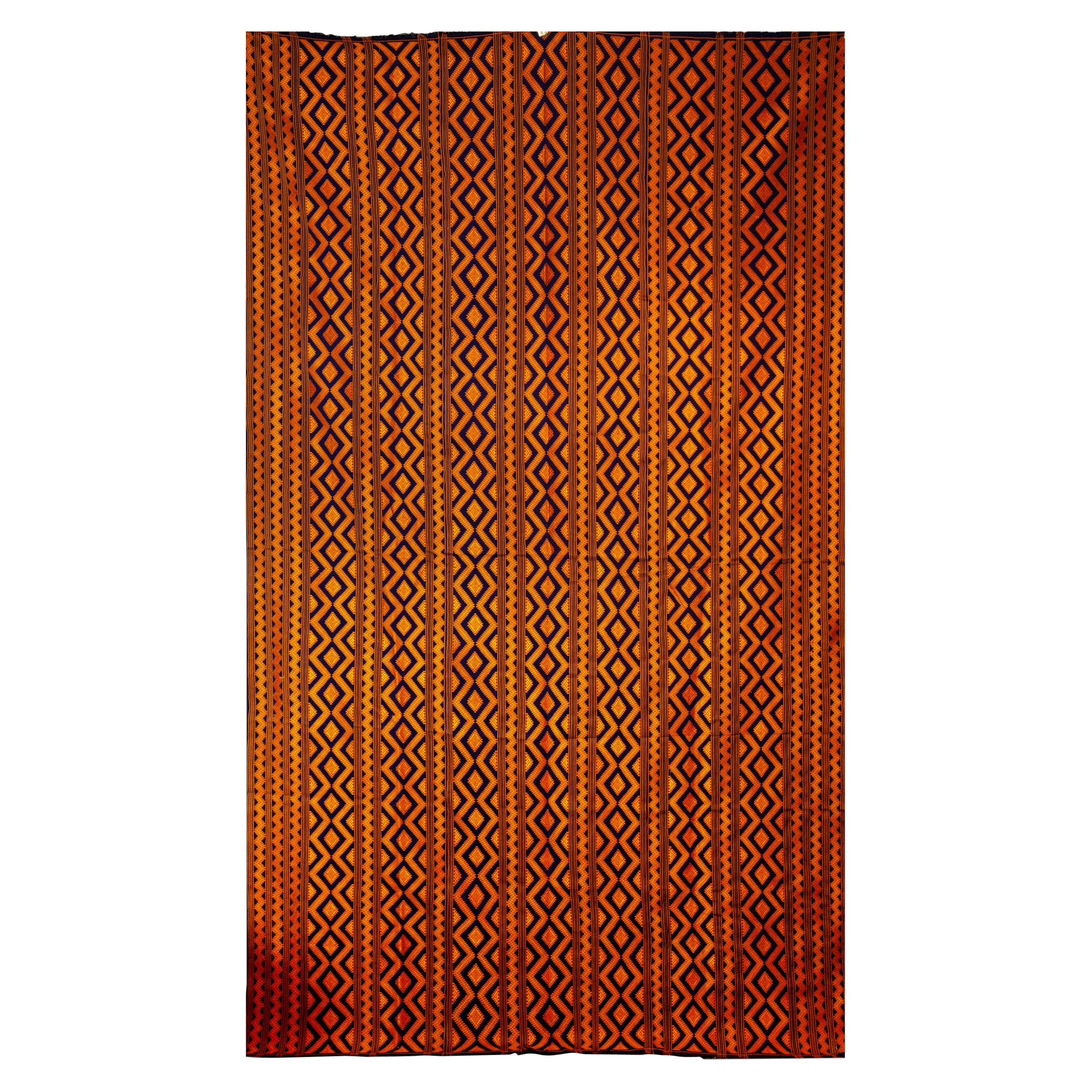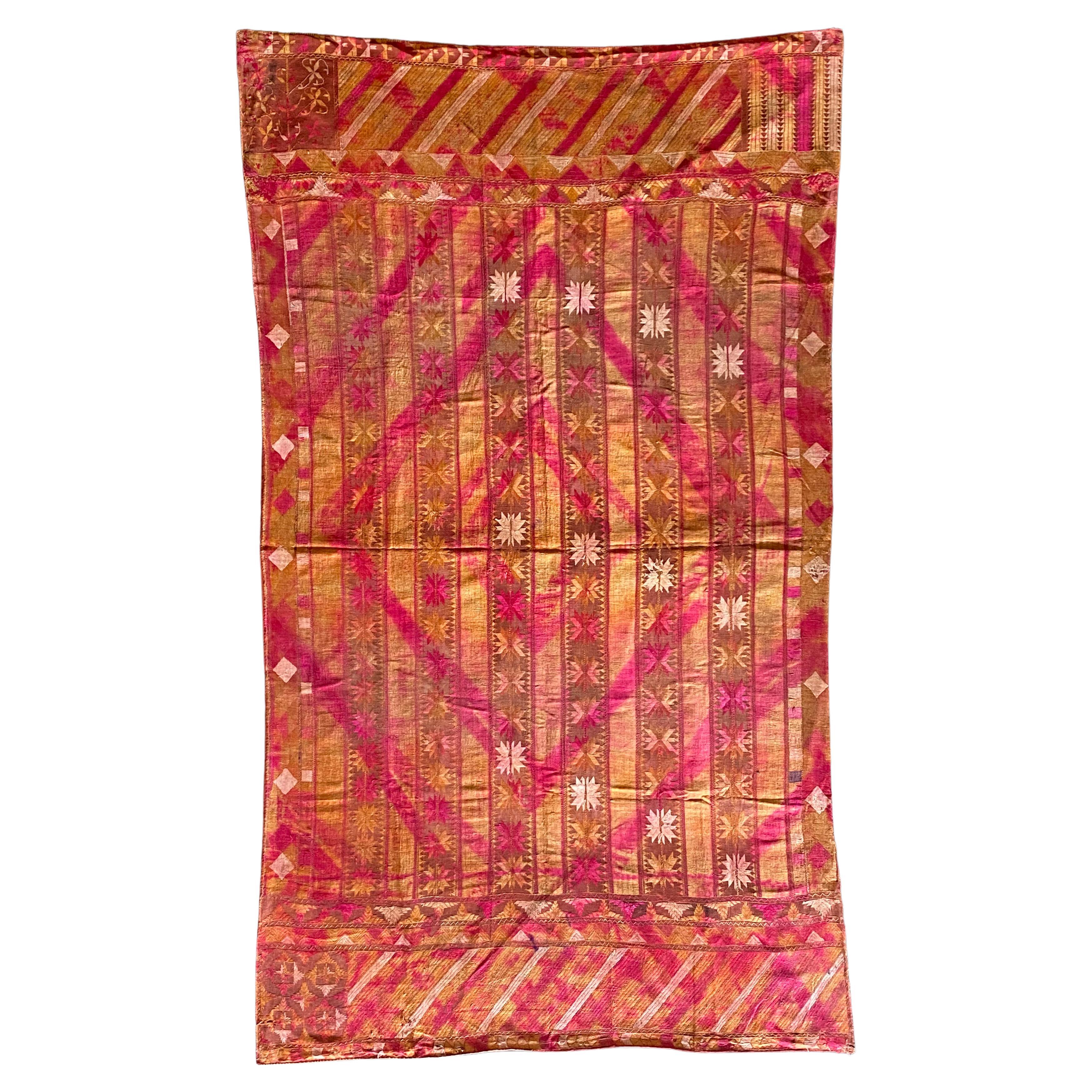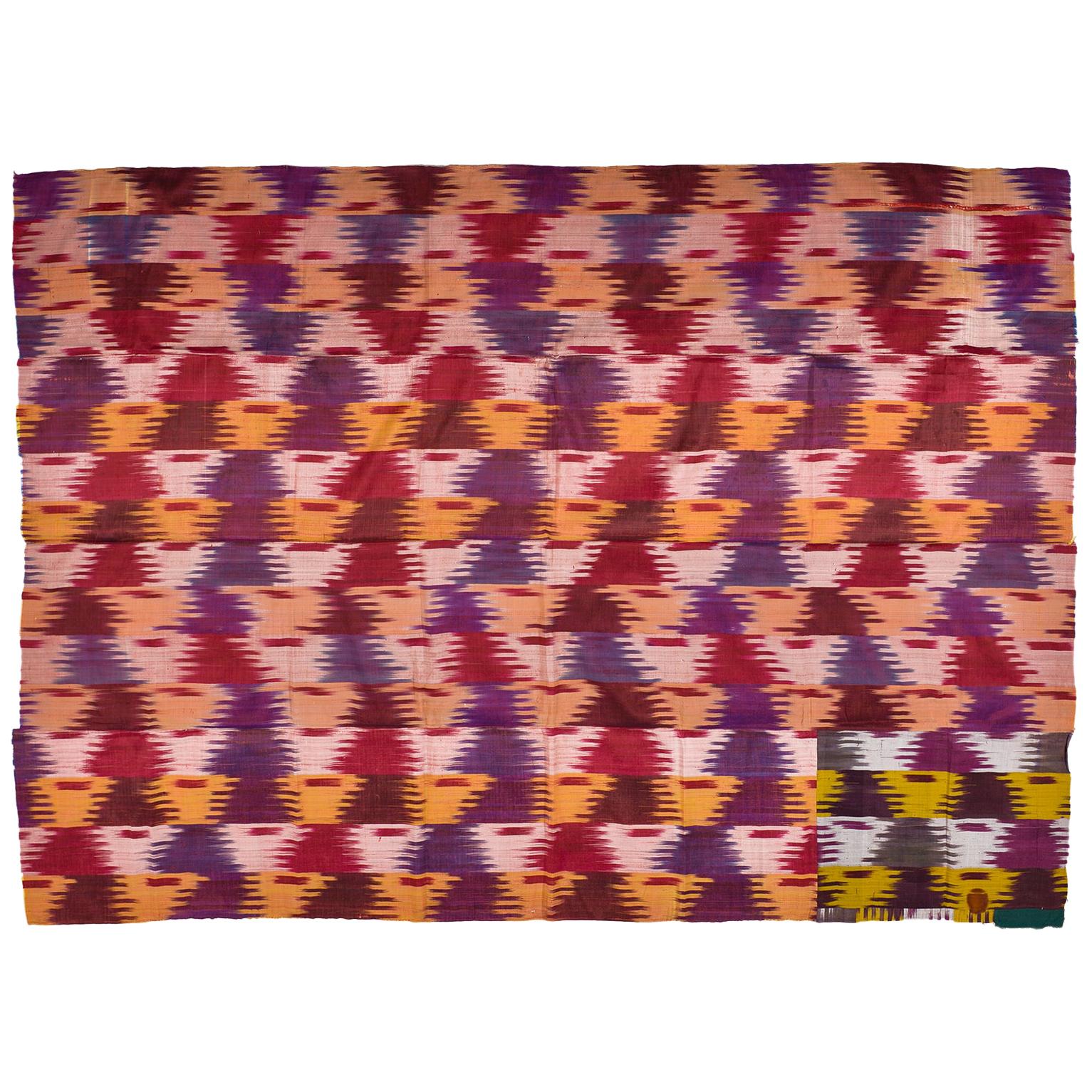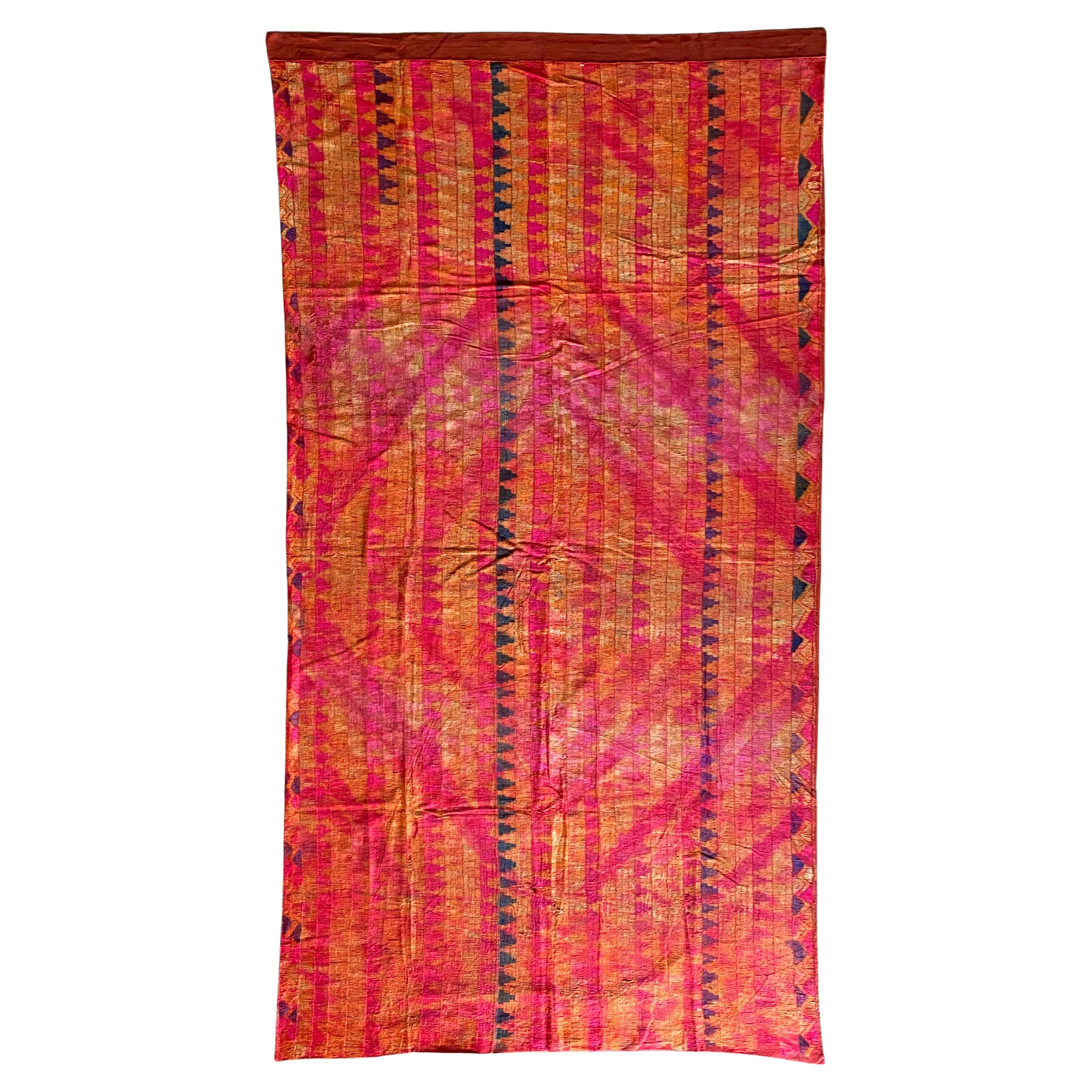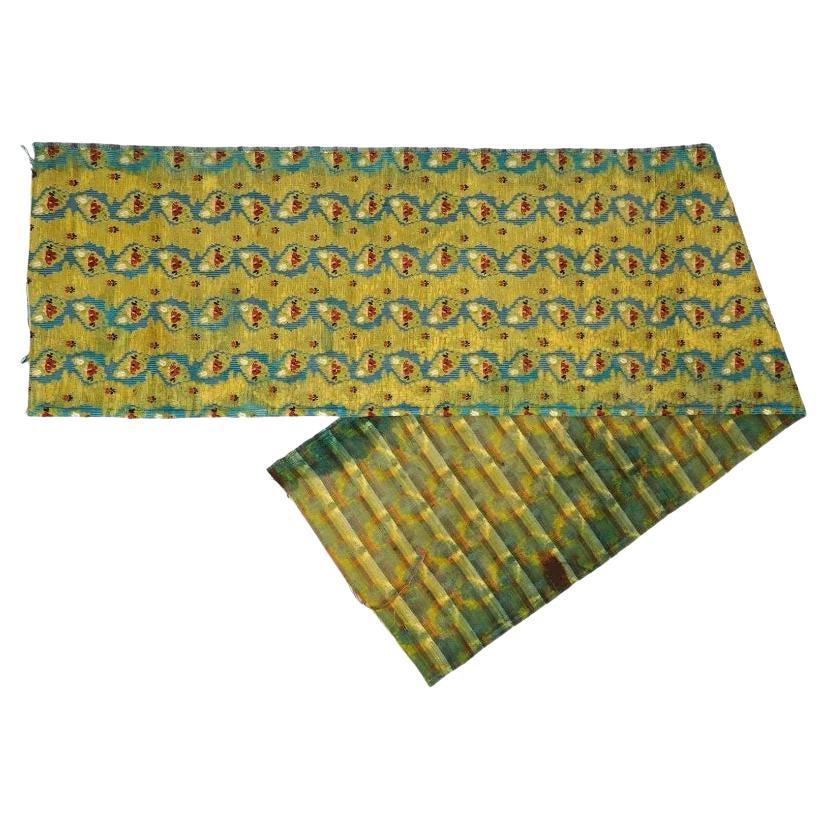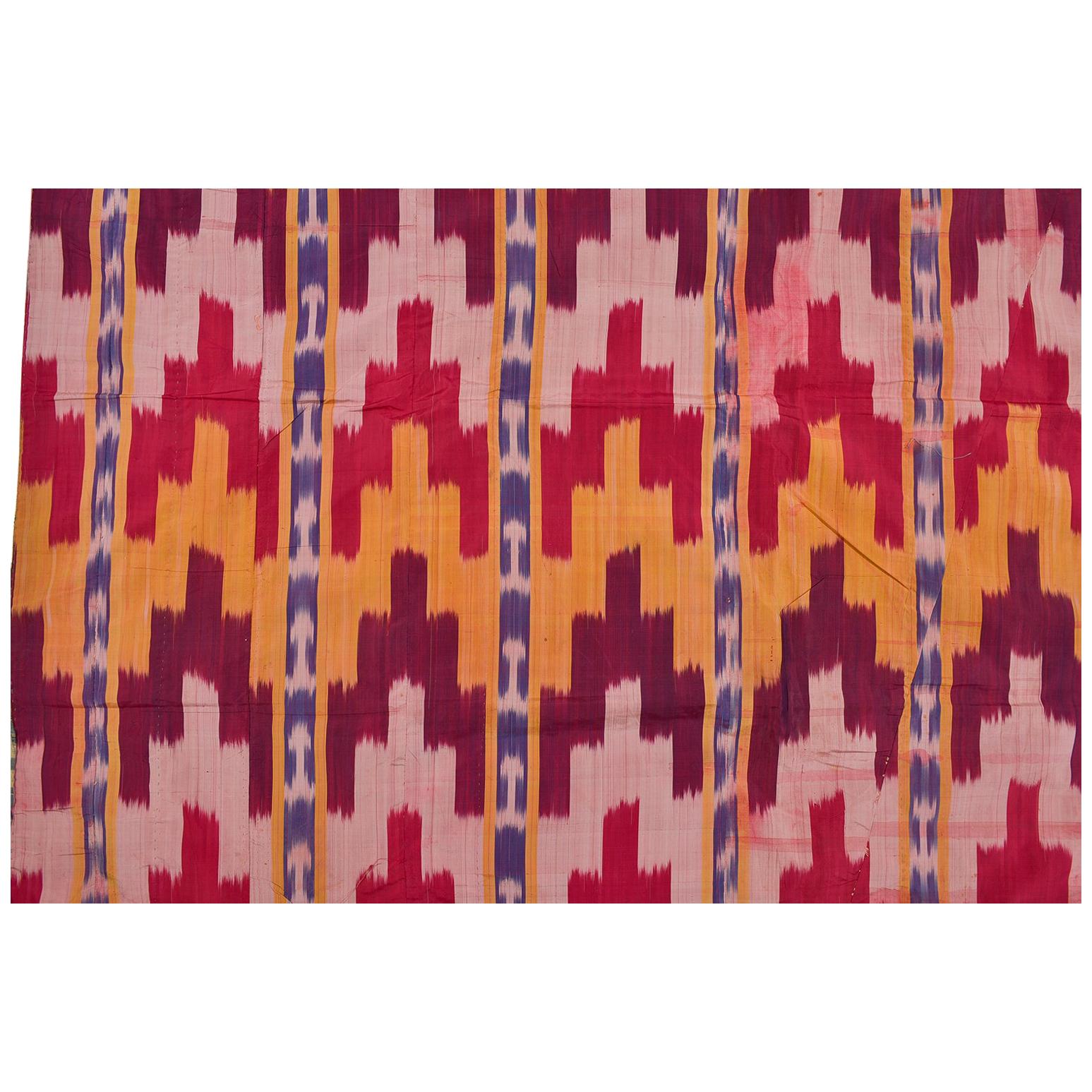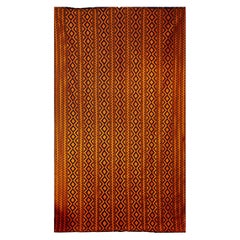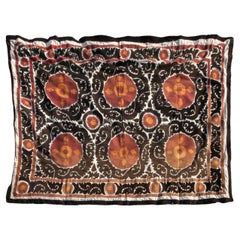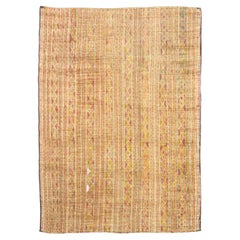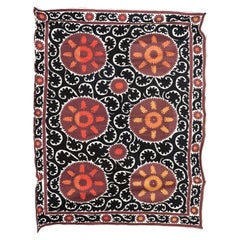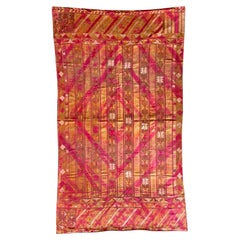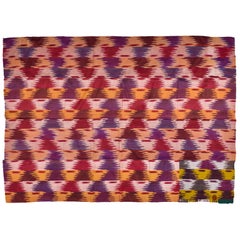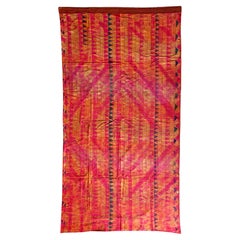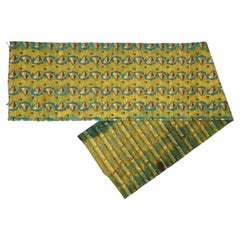Items Similar to Bhutanese Silk Woven Kira Textile, Multicolor on Yellow, from the Royal Weavers
Want more images or videos?
Request additional images or videos from the seller
1 of 7
Bhutanese Silk Woven Kira Textile, Multicolor on Yellow, from the Royal Weavers
$8,000
£6,073.46
€6,946.75
CA$11,177.16
A$12,431.44
CHF 6,491.31
MX$151,277.42
NOK 82,903.97
SEK 77,749.30
DKK 51,846.23
Shipping
Retrieving quote...The 1stDibs Promise:
Authenticity Guarantee,
Money-Back Guarantee,
24-Hour Cancellation
About the Item
Bhutanese silk woven Kira textile, purple. From the Royal weavers of Bhutan, this kira textile is a rectangular weaving worn as an ankle length dress by Bhutanese women. This example was originally woven for Her Majesty Gyalyum (Queen Mother) Sangay Choden Wangchuck, who founded the Royal Textile Museum and Academy in Bhutan. Probably taking almost a year to make, this exquisite example was woven on a back strap loom in three individual panels of silk then sewn together. Given the rectangular shape of the kira, it lends itself to be mounted on the wall as a decoration or used as a throw on a bed or divan.
Measures: 60" x 100".
- Dimensions:Height: 100 in (254 cm)Width: 60 in (152.4 cm)Depth: 0.07 in (1.78 mm)
- Style:Other (In the Style Of)
- Materials and Techniques:Silk,Woven
- Place of Origin:
- Period:
- Date of Manufacture:First Decade of the 21st Century
- Condition:
- Seller Location:New York, NY
- Reference Number:Seller: FI1201stDibs: LU1531217752262
About the Seller
5.0
Vetted Professional Seller
Every seller passes strict standards for authenticity and reliability
Established in 2010
1stDibs seller since 2015
701 sales on 1stDibs
Typical response time: 4 hours
- ShippingRetrieving quote...Shipping from: New York, NY
- Return Policy
Authenticity Guarantee
In the unlikely event there’s an issue with an item’s authenticity, contact us within 1 year for a full refund. DetailsMoney-Back Guarantee
If your item is not as described, is damaged in transit, or does not arrive, contact us within 7 days for a full refund. Details24-Hour Cancellation
You have a 24-hour grace period in which to reconsider your purchase, with no questions asked.Vetted Professional Sellers
Our world-class sellers must adhere to strict standards for service and quality, maintaining the integrity of our listings.Price-Match Guarantee
If you find that a seller listed the same item for a lower price elsewhere, we’ll match it.Trusted Global Delivery
Our best-in-class carrier network provides specialized shipping options worldwide, including custom delivery.More From This Seller
View AllBhutanese Silk Woven Kira Textile, Purple, from the Royal Weavers of Bhutan
Located in New York, NY
Bhutanese silk woven kira textile, purple. From the royal weavers of Bhutan, this kira textile is a rectangular weaving worn as an ankle length dress by B...
Category
21st Century and Contemporary Bhutanese Other Textiles
Materials
Silk
Handmade Vintage Cotton Suzani, Orange, and Charcoal
Located in New York, NY
Handmade Vintage Cotton Suzani, Orange, and Charcoal
Richly hand-embroidered vintage Uzbek suzani in iconic black and copper oranges.
Sun bur...
Category
20th Century Suzani Textiles
Materials
Cotton
Mauritanian 'Tuareg' Rug
Located in New York, NY
Mauritanian rug. This Moroccan Mauritanian (Tuareg) leather mat is made of dwarf palm tree fibers and handwoven with leather stripes. The beautiful des...
Category
20th Century Moroccan and North African Rugs
Materials
Leather, Palmwood
$5,100
Handmade Vintage Cotton Suzani, Rust, Orange, and Yellow
Located in New York, NY
Handmade Vintage Cotton Suzani, Rust, Orange, and Yellow
Measures: 126" x 96".
Category
Antique Mid-19th Century Tapestries
Materials
Cotton
Handmade Vintage Cotton Suzani, Red, Orange, and Black
Located in New York, NY
Handmade Vintage Cotton Suzani, Red, Orange, and Black
Richly hand-embroidered vintage Uzbek suzani in iconic black and copper oranges.
Sun b...
Category
20th Century Textiles
Materials
Cotton
Handmade Vintage Cotton Suzani, Red and Orange
Located in New York, NY
Handmade Vintage Cotton Suzani, Red and Orange
Measures: 142" x 93".
Category
Antique Mid-19th Century Tapestries
Materials
Cotton
You May Also Like
Indian Phulkari Wedding Textile, Silk & Cotton Embroidery, Punjab 1900s
Located in Jimbaran, Bali
This strikingly coloured Phulkari is from Punjab, India. It was hand-crafted from silk and cotton, with silk being used for the embroidery. Phulkari’s are a form of wedding shawl and...
Category
Early 20th Century Indian Other Textiles
Materials
Cotton, Silk
Double Layer Old Silk Ikat Uzbekistan Textil
Located in Alessandria, Piemonte
Olk Silk Uzbekistan Ikat, washed and ironed for sale - This item has TWO straight parts of fabric -
Beautiful tribal female workmanship, with bright and cheerful colors as per trad...
Category
Antique Late 19th Century Uzbek Other Textiles
Materials
Silk
$1,797 Sale Price
50% Off
Indian Phulkari Wedding Textile, Silk & Cotton Embroidery, Punjab, 1900s
Located in Jimbaran, Bali
This strikingly coloured Phulkari is from Punjab, India. It was hand-crafted from silk and cotton, with silk being used for the embroidery. Phulkari’s are a form of wedding shawl and...
Category
Early 20th Century Indian Other Textiles
Materials
Cotton, Silk
18Th Century Antique French Hand Woven Textile
Located in Long Island City, NY
An antique French hand woven embroidered textile wall hanging or table runner. The ware is adorned with floral and foliage ornaments in bright green, red and blue shades. Circa: late...
Category
Antique 18th Century Unknown Textiles
Materials
Textile
$300 Sale Price
40% Off
Rare Antique Silk Ikat Fergana, Dubbed with Other Silk Ikat
Located in Alessandria, Piemonte
Rare antique Fergana Uzbekistn silk ikat, dubbed with other silk light blue ikat - There is a rich bibliography on these Turkmenistan textiles -
Hanging on the wall like a tapestry, ...
Category
Antique Late 19th Century Uzbek Other Textiles
Materials
Silk
$3,522 Sale Price
30% Off
African Batik Cloth Natural Hand-woven Hand-Printed Cotton Fabric Ghana 10 Yards
Located in North Hollywood, CA
African Batik Cloth Natural Hand-woven Hand-Printed Cotton Fabric Ghana 10 yards.
Colors are organic earth tone beige and light brown in geometric design.
Non waxed fabric circa 1950s.
Hand made in Ghana Africa.
Museum Quality Original Long Piece.
380 inches, (30 ft 10 yards Long) x 46 inches Inches Wide( 4ft).
Could be use to make pillows or upholstery.
History of Batik in Africa:
Batik, a traditional fabric art technique, has a rich history in Ghana, West Africa. The practice of batik involves using wax to create intricate patterns on fabric, which is then dyed to achieve the desired design. While batik has its origins in Asia, particularly in Indonesia, it has been embraced and adapted by various African countries, including Ghana.
In Ghana, batik-making can be traced back to the mid-20th century when it gained popularity as a form of traditional textile art. The craft was introduced by artists and artisans who were inspired by the vibrant and expressive nature of batik. These early practitioners experimented with different designs, colors, and patterns, infusing local themes and motifs into their creations.
Over time, batik became an important part of Ghanaian culture and identity. It is not only used for clothing but also for various decorative and functional items such as wall hangings, tablecloths, and accessories. The art form often reflects the rich cultural heritage of Ghana, incorporating symbols, proverbs, and traditional stories into the designs.
Ghanaian batik artists often employ a combination of traditional and contemporary elements, creating a unique fusion of styles. The process of making batik involves applying hot wax to the fabric using various tools to create the desired patterns. The wax acts as a resist, preventing dye from penetrating the waxed areas. After dyeing, the wax is removed, revealing the intricate designs on the fabric.
Today, batik-making in Ghana continues to thrive as both a traditional craft and a form of artistic expression. Many artisans and designers draw inspiration from Ghana's diverse cultural landscape, incorporating elements from different regions and ethnic groups into their batik creations. The art form has also gained international recognition, with Ghanaian batik products being sought after both locally and abroad.
In summary, the history of batik in Ghana is a testament to the creativity and adaptability of artists who have embraced and transformed this traditional technique into a vibrant and culturally significant art form within the country.
HISTORY OF BATIK
In the mid-nineteenth century, the Belanda Hitam, or "Black Dutchmen," are said to have introduced batik to West Africa after serving as indentured soldiers for the Dutch in Indonesia. Returning from their conscriptions with trunks of fine Javanese batik, the opulent patterns captured the imagination of their friends and relatives. However, textile history is complex, and only a handful of recruits returned to West Africa with batik due to delayed payments.
Batik, with roots traced to Egyptian mummies, is a tradition found globally, from Southeast Asia to Japan and India. Europeans, particularly the Dutch, played a significant role in industrializing batik from the seventeenth century onward.
In West Africa, Dutch Scholar Ineke van Kessel suggests that batik arrived from India over trans-Saharan routes. Local populations, like the Yoruba in Nigeria, incorporated wax printing into their textiles. European traders brought wax and non-wax fabrics to West Africa in the seventeenth century, targeting a population ready for their consumption. European designers adapted prints for the African market...
Category
Mid-20th Century Ghanaian Folk Art Textiles
Materials
Cotton
